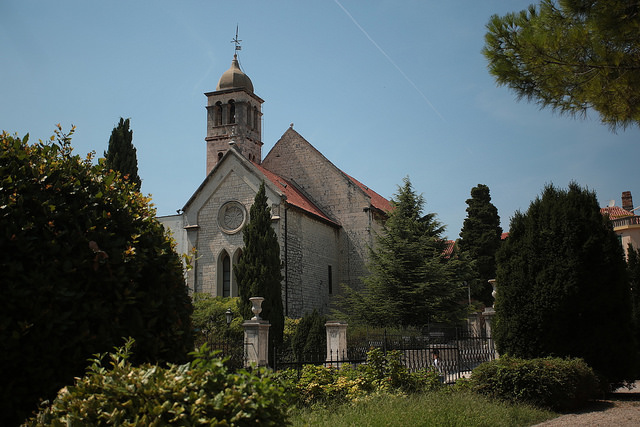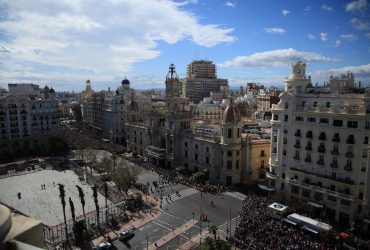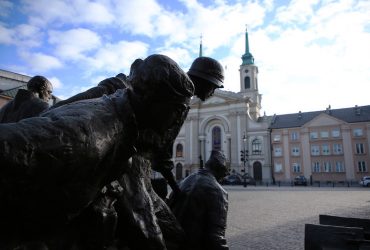One of the first cities I chose to visit during my trip to Croatia was Šibenik. The town was under Hungarian rule until 1322 and then the Republic of Venice until 1357 (and again from 1412 to 1797. In the meantime it returned to being Hungarian). The dominations also alternated in the following centuries, between the
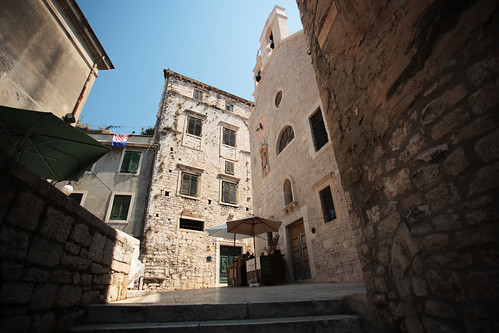 Austrian empire, France, Yugoslavia and others (including Italy). The town became Croatian in 1991. By car, it is 1 hour and 10 minutes from Spalato, 1h and 45 from Almissa and 20 minutes from the national park of Krka. From Almissa, the city that I chose as a base for my stay, the motorway is cost 47 kunas (about 6.40 euros). The historical centre is less significant than I expected (even if it is big) and there are many things to visit starting from the splendid St. JamesCathedral. Its construction, on a pre-existing building,
Austrian empire, France, Yugoslavia and others (including Italy). The town became Croatian in 1991. By car, it is 1 hour and 10 minutes from Spalato, 1h and 45 from Almissa and 20 minutes from the national park of Krka. From Almissa, the city that I chose as a base for my stay, the motorway is cost 47 kunas (about 6.40 euros). The historical centre is less significant than I expected (even if it is big) and there are many things to visit starting from the splendid St. JamesCathedral. Its construction, on a pre-existing building,
 was entrusted to Giorgio Orsini and was begun in 1431. Built with stones from the islands of Brac, Korčula, Rab and Krk, it was completed in 1536 by Niccolò Fiorentino. Externally, around the building, a freeze has been created that represents 71 inhabitants of the city (apparently from the era of the construction of the church). Inside there is a baptismal font supported by three angels designed by Giorgio Orsini and made by Andrea Alessi. The cathedral, a city jewel, has been a UNESCO World Heritage Site since 2000.
was entrusted to Giorgio Orsini and was begun in 1431. Built with stones from the islands of Brac, Korčula, Rab and Krk, it was completed in 1536 by Niccolò Fiorentino. Externally, around the building, a freeze has been created that represents 71 inhabitants of the city (apparently from the era of the construction of the church). Inside there is a baptismal font supported by three angels designed by Giorgio Orsini and made by Andrea Alessi. The cathedral, a city jewel, has been a UNESCO World Heritage Site since 2000.
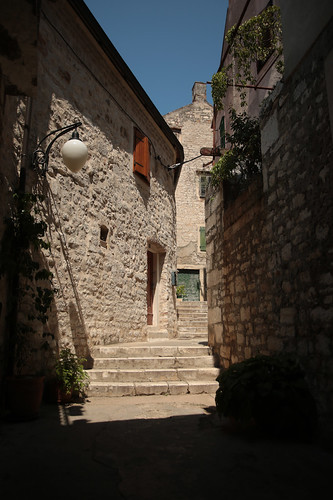 In the square in front, there is the statue dedicated to Giorgio Orsini, realised by Ivan Meštrović. Before the Second World War, there was also a statue in honour of the Serbian writer Niccolò Tommaseo who, unfortunately, seems to have been demolished because “a sign of Italianness”. Not far from the cathedral is the City Museum, which is located in what was the Doge’s Palace and was founded in 1925. The building, initially, was part of the city’s defensive system: it was an integral part of the city walls, built to defend Sibenik in the XIII-XIV century from sea attacks.
In the square in front, there is the statue dedicated to Giorgio Orsini, realised by Ivan Meštrović. Before the Second World War, there was also a statue in honour of the Serbian writer Niccolò Tommaseo who, unfortunately, seems to have been demolished because “a sign of Italianness”. Not far from the cathedral is the City Museum, which is located in what was the Doge’s Palace and was founded in 1925. The building, initially, was part of the city’s defensive system: it was an integral part of the city walls, built to defend Sibenik in the XIII-XIV century from sea attacks.
Inside there are archaeological artefacts, ethnographic and historical documents that tell the story of the city and the territories under its control. The museum is open from Monday to Saturday from 10 am to 3 pm, the ticket costs 30 Kuna (about 4 euros), the discount ticket for students, pensioners and teachers costs 10.00 Kuna (1.50 Euro) and children under 12 years enter for free. Exploring the alleys of the centre, you get to the Church of San Lorenzo. This church was built in the second half of the
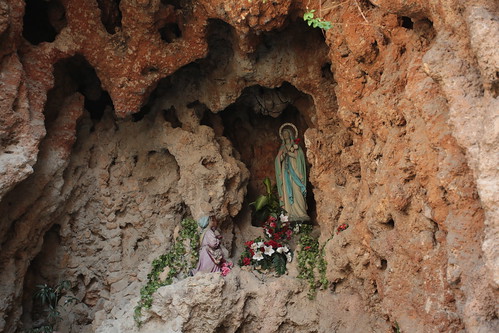 eighteenth century requested by the Franciscans. Beside to the entrance door, there is the cave of Gospa Lurdska (Madonna of Lourdes). Opposite the church there is the Franciscan monastery dating back to 1650: what is called “Palazzo di Foscolo” is the main building of the monastery and is the best example of a 15th-century residential building (hence the period of the Gothic-floral style) and of the
eighteenth century requested by the Franciscans. Beside to the entrance door, there is the cave of Gospa Lurdska (Madonna of Lourdes). Opposite the church there is the Franciscan monastery dating back to 1650: what is called “Palazzo di Foscolo” is the main building of the monastery and is the best example of a 15th-century residential building (hence the period of the Gothic-floral style) and of the
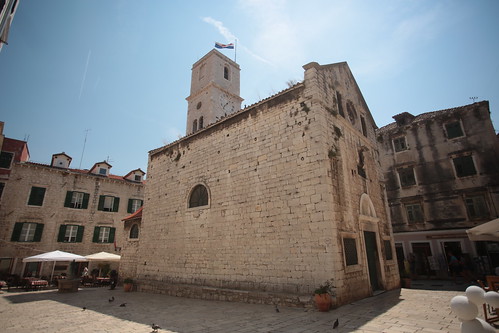 master Juraj Dalmatinac. Even the gardens of the monastery itself are delightful for a quick visit, even if today there is also a small bar-restaurant (although good and cheap enough it tends to “ruin” the magic of the place). Between the alleys of the historical centre, from the hot and sultry climate during the summer, the Church of the Holy Spirit and the Church of San Giovanni are embedded (reconstructed after a collapse in 1531 and that is noted thanks to its bell tower, which stands among the houses of the city centre).
master Juraj Dalmatinac. Even the gardens of the monastery itself are delightful for a quick visit, even if today there is also a small bar-restaurant (although good and cheap enough it tends to “ruin” the magic of the place). Between the alleys of the historical centre, from the hot and sultry climate during the summer, the Church of the Holy Spirit and the Church of San Giovanni are embedded (reconstructed after a collapse in 1531 and that is noted thanks to its bell tower, which stands among the houses of the city centre).
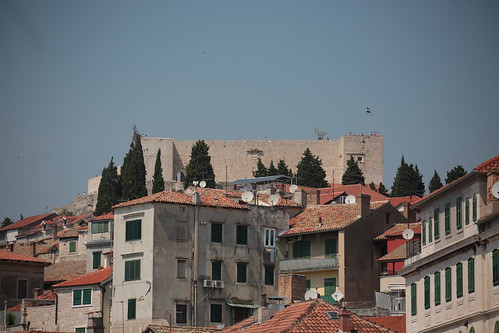 Finally, the St. Michael Fortress is indeed worthy of note. It was built in the Middle Ages on a Venetian project, and until the seventeenth century, there were several restorations (we know, thanks to archaeological excavations, which is located on the site of what was perhaps a fortress from the Illyrian era). In ancient times its purpose was defensive, so much so that the remains of bastions can still be seen around it and its position dominates the city, while from 2014 there are theatrical performances (it seems to be able to host up to 1000 people). There would still be many things to see during a visit to Sibenik, which for reasons of time (and summer heat) I chose not to visit. Handy, in this regard, maybe the official website of the city tourism (which came in handy to find all the useful information for my trip).
Finally, the St. Michael Fortress is indeed worthy of note. It was built in the Middle Ages on a Venetian project, and until the seventeenth century, there were several restorations (we know, thanks to archaeological excavations, which is located on the site of what was perhaps a fortress from the Illyrian era). In ancient times its purpose was defensive, so much so that the remains of bastions can still be seen around it and its position dominates the city, while from 2014 there are theatrical performances (it seems to be able to host up to 1000 people). There would still be many things to see during a visit to Sibenik, which for reasons of time (and summer heat) I chose not to visit. Handy, in this regard, maybe the official website of the city tourism (which came in handy to find all the useful information for my trip).
A day in Sibenik – Dalmatia
